Queen Anne of England
Part 2: Ruling the Realm
The war had gone the way of France for the first few years. The 1704 Battle of Blenheim turned the tide the other way. Marlborough was commander-in-chief of the allied armies in Flanders. In August 1704, he met up with Prince Eugene near the Danube River, as French forces drove toward Vienna in hopes of capturing it and Archduke Charles. The opposing forces were roughly equal in numbers of men and munitions. On August 2, they gave battle. The battle took place near the small village of Blindheim (from whence comes the English "Blenheim"). The two sides traded fire and positions for most of the day, until French forces faltered and gave way all along the lines. The result was a resounding Allied victory. French losses were very high, numbering in the tens of thousands, and included the commander, Marshal Tallard. In the same year, Dutch and English sea forces seized Gibraltar and gained control of the Mediterranean, a control that they would keep for the remainder of the war. The result was proof that French forces were not invincible, as it had seemed to the Allied forces for the first few years of the struggle. 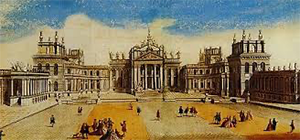
After a year in which no significant battles occurred, the Allies scored more successes in 1706, smashing through French defenses in north Italy, leading to a French withdrawal from the region, and driving the French out of the Spanish Netherlands altogether. Of particular significance was another victory led by Marlborough, that at the Battle of Ramillies. Allied success was even greater than at Blenheim, resulting in the deaths of 13,000 French soldiers and the capture of the entirety of the French artillery. Another big success for Marlborough and the English came at the Battle of Malplaquet, in September 1709. Queen Anne and Parliament rewarded Marlborough with land in Oxfordshire and had built for him a giant living space called Blenheim Palace. A series of three treaties eventually ended the war, in 1714. England got to keep Gibraltar and Minorca, giving the British watchful eyes on the Mediterranean. Fighting took place in North America, where it was known as Queen Anne's War. Britain and France squared off, and Britain also gained control of Newfoundland and Nova Scotia. Anne was queen when the unofficial union first perpetrated when Scotland's King James VI became England's King James I was made official. On January 16, 1707, the Scottish Parliament voted to accept the Act of Union 1707, which created the Kingdom of Great Britain out of a political coming together of the Kingdom of England and the Kingdom of Scotland. England's Parliament debated the issue as well and approved it on March 6. And so it was that on May 1, 1707, the two kingdoms became one. The Scottish Parliament and the English Parliament were dissolved. In practice, many members of both Parliaments became members of the first Parliament of Great Britain. As well, a new flag was created, by melding the red cross of St. George and the blue cross of St. Anne was a popular queen who presided over a flourishing in literature and architecture as well. Among the famous writers during her reign were Jonathan Swift, famous for writing Gulliver's Travels; Daniel Defoe, who wrote Robinson Crusoe; John Locke, whose Essay Concerning Human Understanding and Two Treatises on Government informed much Enlightenment thought and inspired America's Founding Fathers; and the famous poet Alexander Pope. 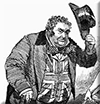 Also created during this time, by Dr. John Arbuthnot, was the character of John Bull, a cartoon character who later came to personify Great Britain as the voice of common sense. Bull first appeared in the 1712 pamphlet Law is a Bottomless Pit. One of England's most famous architects, Sir Christopher Wren, was in his prime during this time, hard at work on building St. Paul's Cathedral. George Frideric Handel, who wrote the Messiah, was composing during this time. 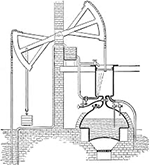
It was the time of Scientific Revolution and the Enlightenment, and Sir Isaac Newton was in his prime, publishing Opticks, a master treatise on light, in 1704. Queen Anne appointed him Master of the Royal Mint. Anticipating the Industrial Revolution, Thomas Savery in 1698 had invented the first working steam engine; another engineer, Thomas Newcomen, greatly improved on Savery's device with the atmospheric engine (right), in 1712. Also coming to the fore was the seed drill, invented by Jethro Tull in 1701. The Statute of Anne, also known as the Copyright Act 1710, was the world's first copyright law. For the first time, authors, not publishers, retained the copyright to published works. 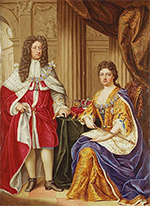
In the religious vein, Anne created Queen Anne's Bounty, a plan for ensuring that her realm's poorer clergy benefited from the tithes that the Church of England brought in for the state. Anne suffered personal sadness several times during the last half of her life. Her husband, Prince George, died in 1708. They had not enjoyed a happy marriage. A bitter quarrel severed her friendship with Sarah Churchill in 1710. Her favorite then became Abigail Masham. Anne's maladies worsened in her later years. She had trouble walking after a time. She suffered a stroke in the summer of 1714. She died on August 1. She was 49. Succeeding Anne on the British throne was George I. First page > Setting the Stage > Page 1, 2 |
|
Social Studies for Kids
copyright 2002–2025
David White



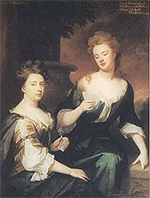 The
The 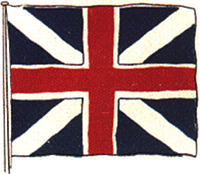 Andrew (after the patron saints of the two countries). The result was what is called the "old Union flag." The Union flag that is familiar today has added to it the red cross of Ireland's patron saint, Patrick, and that flag began to be used after the
Andrew (after the patron saints of the two countries). The result was what is called the "old Union flag." The Union flag that is familiar today has added to it the red cross of Ireland's patron saint, Patrick, and that flag began to be used after the 
